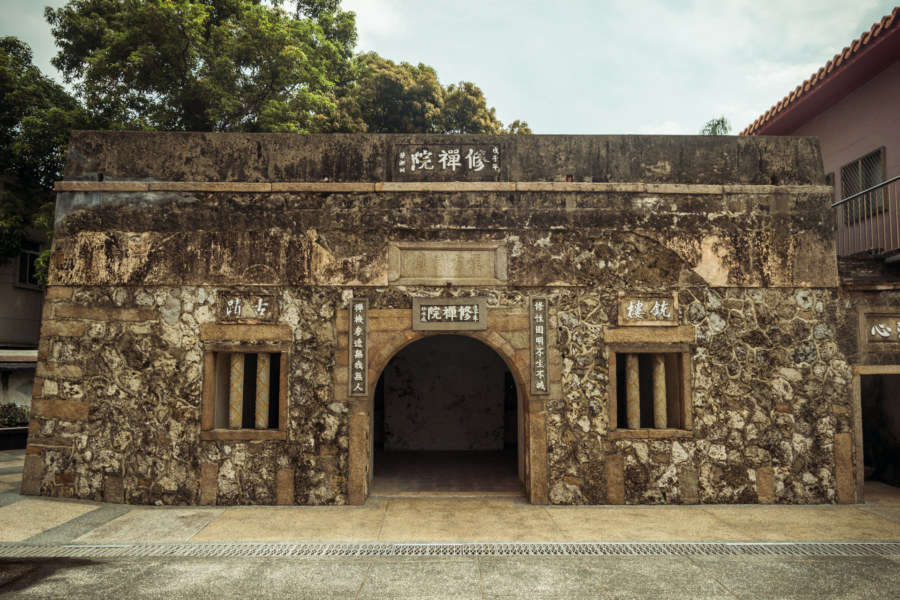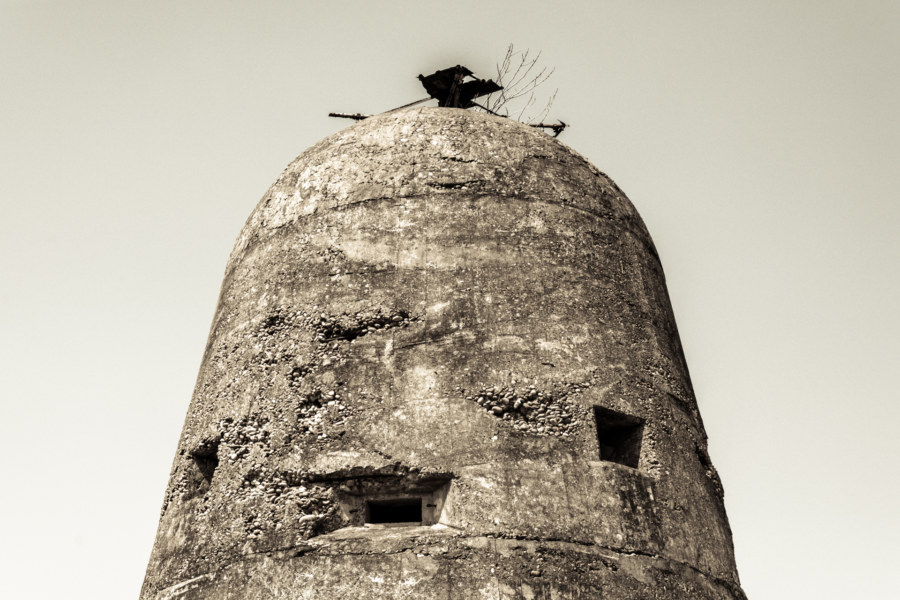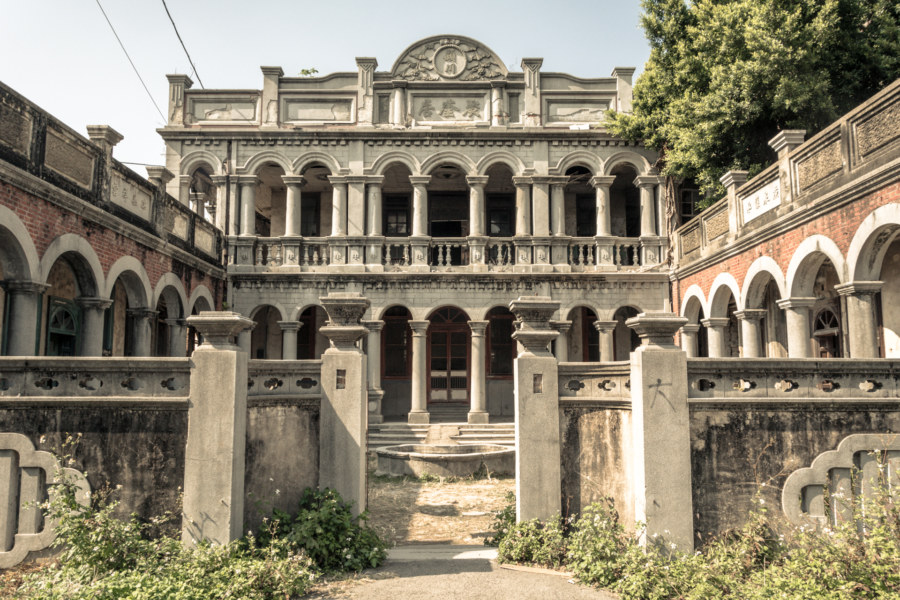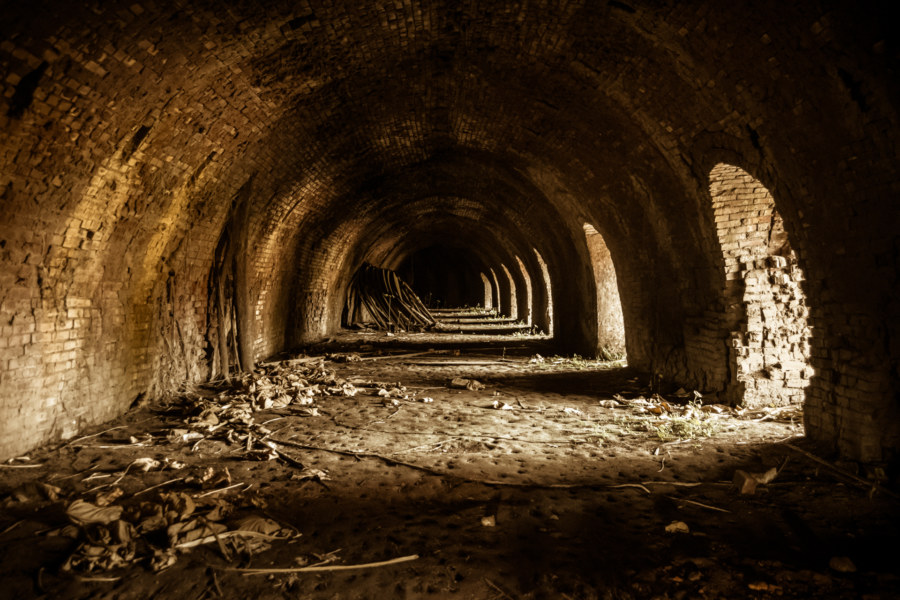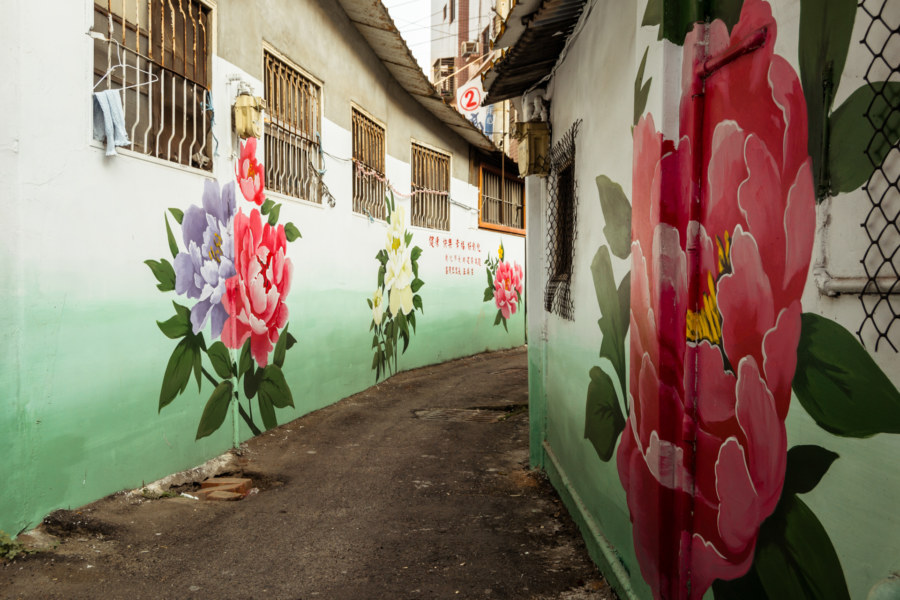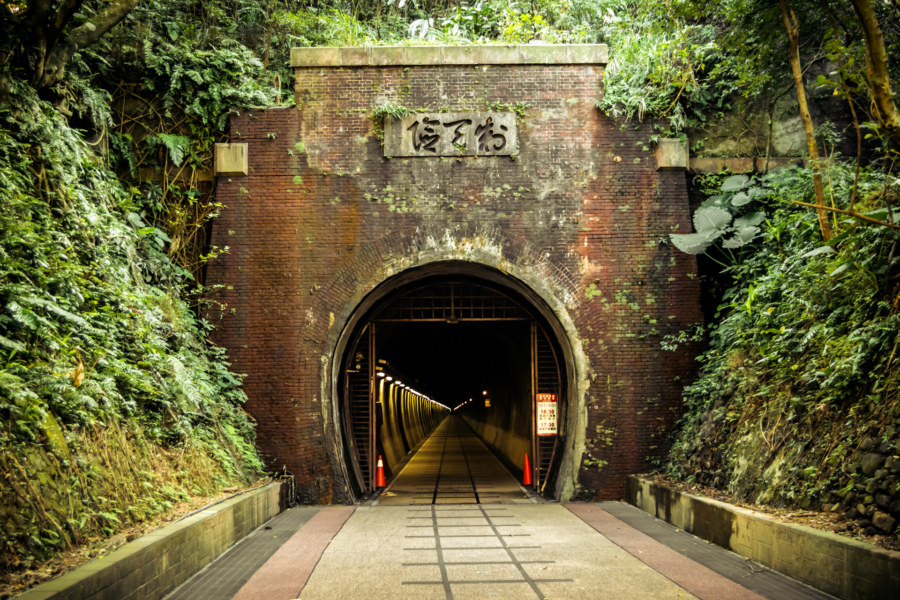Xunfang Fortress 巽方砲台 is another obscure historic site in Tainan that I found while digging into the archives of the excellent Tainan City Guide. This Qing dynasty era ruin can be found on the grounds of a monastery in East Tainan not far from the location of Dadong Night Market 大東夜市.
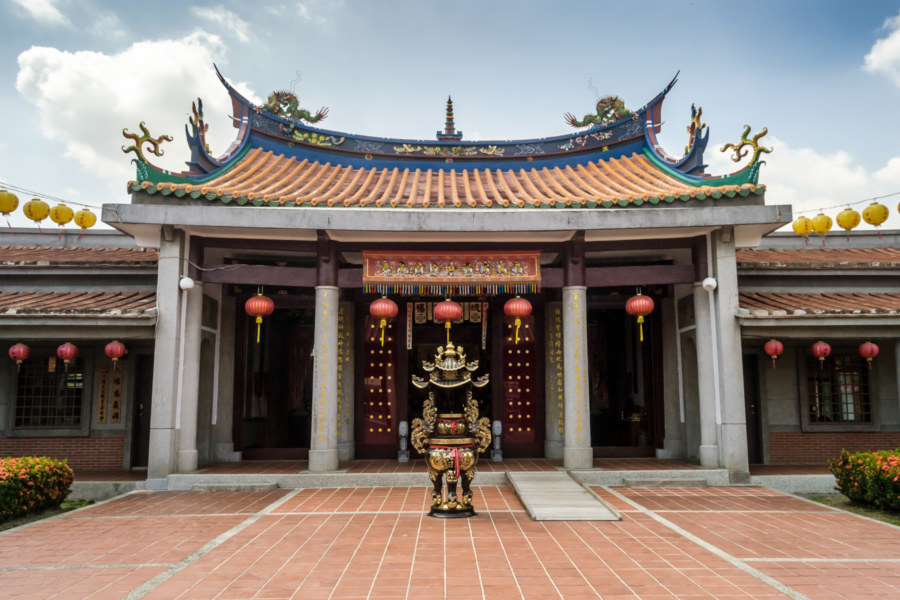
Gathered here are officially recognized cultural assets as designated by the Ministry of Culture (文化部). These assets include buildings, monuments, bridges, and other physical structures as well as natural landscapes and intangibles. For a broad overview have a look at some of the most treasured cultural assets in Taiwan.
Changhua Aerodrome Fortifications 彰化飛行場古砲台
One of my idle pursuits this mild winter has involved documenting all the obscure and unusual stuff I find in my travels around Changhua. When I go riding I prefer to take winding roads that twist and turn through old villages rather than the newer thoroughfares that directly connect communities in the countryside. Sometimes this pays off—for instance, while exploring some of the side roads on my way to Lukang I found this strange looking building amid the rice fields and rural industrial sprawl.
Jukuiju 聚奎居
Jùkuíjū 聚奎居 is an abandoned mansion in Wuri, Taichung, built in 1920 by Chén Shàozōng 陳紹宗, a wealthy businessman and landowner. The architecture is a combination of the traditional Taiwanese sānhéyuàn 三合院 (a U-shaped building with three parts surrounding a central courtyard) and the Baroque Revival style of the Japanese colonial era. It is located on the rundown, industrial margins of the city, along an otherwise unremarkable lane next to a military base, looking completely out of place in space and time.
Jinshuncheng Hoffmann Kiln 金順成八卦窯
Jīnshùnchéng Hoffmann Kiln 金順成八卦窯 is located on the eastern Changhua Plain 彰化平原 in Huatan, a rural township south of Changhua City. During the Japanese colonial era this part of Taiwan specialized in brick and ceramic production due to plentiful supplies of high-quality clay, and the industry continued to expand after the arrival of the KMT. This particular kiln only dates back to the early 1960s and is the last of its kind in Changhua. For that reason the county government designated it a historic building in 2010 but very little has been done to clean the site and make it inviting to visitors.
Postcards From Changhua City 1 彰化市明信片一號
I moved to Changhua City in November 2014 to see what it’s like living in a traditional town in central Taiwan. I had an interesting time staying in Tainan for three months earlier that year so I figured why not give Changhua a shot for the wintertime? Changhua is nowhere near as lively and interesting as Taiwan’s old southern capital but it is not without charm. Here I have gathered up some of the more representative images I captured during my first two months of residency, mostly of the area immediately to the east of the train station, which also happens to be the oldest part of town. Explanations are given in the caption of each photo, where available.
Old Caoling Tunnel 舊草嶺隧道
Old Caoling Tunnel 舊草嶺隧道 was built in the 1920s to connect northern Taiwan with the eastern coast by rail. A new tunnel was built in the 1980s and the old tunnel was closed until 2008 when it reopened as a tourist-friendly bikeway. The main point of entry is Fúlóng 福隆, a beach town in New Taipei City about an hour outside of Taipei by train. Riding through the old tunnel makes for a great day trip from Taipei—as long as you don’t go on a weekend.
